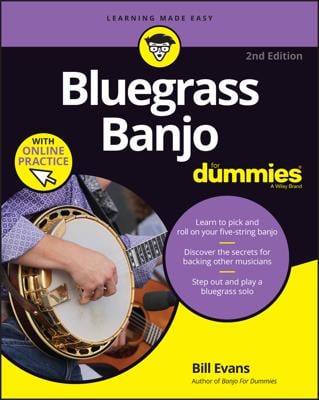Five-string banjos can be either resonator banjos or open-back banjos. There isn't a big difference, physically, to the way these two types look, and which type you choose depends largely on your own preferences:
- A resonator banjo has a wooden back attached to the instrument.
- An open-back banjo doesn't have anything attached to the back. You can easily look into the inside of the banjo's sound-producing chamber.
Your decision about which kind of banjo is best for you should be based primarily on the style of music you want to play. The differences between these two types of banjos are mainly about the sounds that skilled players prefer. After you try out both kinds of banjos at a music store, you can quickly understand some of these differences, even if you've never played banjo before.
Resonator banjos
Over the past 150 years, banjo builders have continually tried to make banjos louder. You're probably asking yourself, Aren't banjos loud enough already? Well, maybe they are now, but it wasn't always that way. Around 1860, someone came up with the idea of attaching a wooden chamber, or resonator, to the back of the banjo body in order to increase the volume of the instrument. The resonator reflects the sound off its inside surface and projects the sound out the front of the instrument and away from the player. The result is more volume and a brighter banjo sound.
In bluegrass music, you need to be able to play loud enough that the other band members and your audience can hear your virtuosic solos. Therefore, practically all bluegrass-based banjo players prefer a resonator banjo with metal strings.
Entry-level resonator banjos are more expensive than comparable open-back instruments. However, if you're interested in playing bluegrass, you should spend the extra money and get a resonator banjo.
The resonator is usually attached to the banjo with thumbscrews. If you ever need either less volume or the tone of an open-back banjo, you can always loosen the thumbscrews and remove the resonator to create an instant open-back instrument.
Open-back banjos
Open-back banjos generally have a mellower tone, weigh less, and can be less expensive than resonator banjos. They also usually have a different setup than a resonator banjo, often with a higher string action (string action refers to how high the strings are positioned above the fingerboard). Open-back players use metal, nylon, or gut strings, depending on the style of music they're playing, how their instrument is set up, and the sound they want to get from their banjos.
Several manufacturers have entry-level open-back banjos with the same sound chamber (or pot) and overall design and construction as a matching resonator model. However, more-expensive open-back banjos likely have a different configuration of metal and wood than you find on a resonator banjo.

